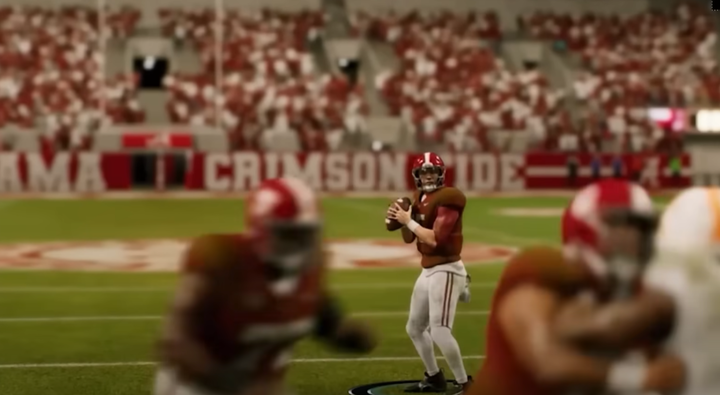MMOexp:Short yard offense tricks for College Football 26
-
Posted by UptonDyson - #College Football 26 Coins #NCAA Football 26 Coins for sale
- Location bfdng [map]
In College Football 26 Coins, mastering short-yardage situations can make or break a game. Whether you're facing a third-and-one, fourth-and-two, or a critical goal-line scenario, knowing how to convert those tough yards is essential. A strong short-yard offense can keep drives alive, build momentum, and keep opposing defenses on their toes. This guide will explore the best strategies, formations, and plays to help you succeed in short-yardage situations.
Understanding Short-Yardage Situations
Short-yardage situations typically occur when the offense needs just a few yards to gain a first down or score a touchdown. These plays are crucial because they often happen at pivotal points in the game, like near the goal line or in the red zone. In College Football 26, the defense will often stack the box with extra players near the line of scrimmage to stop the run, making it important for the offense to be both powerful and precise in its approach.
The key to success in these scenarios is execution. The offense must pick the right play, run it effectively, and counter any defensive shifts that may occur.
Effective Formations for Short-Yardage Plays
Choosing the right formation is critical in short-yardage situations. A strong formation can overpower the defense and create the necessary openings. Here are some common formations that excel in these situations:
I-Formation:The I-Formation places a fullback directly in front of the running back, creating a powerful lead block. This formation is ideal for inside runs, where the fullback can clear a path for the running back to gain those crucial yards.
Singleback Power:The Singleback Power formation features a running back behind the quarterback, with pulling linemen to create additional blockers at the point of attack. This setup works well for both inside and outside runs, providing flexibility to exploit any defensive weaknesses.
Goal-Line Formation:Used near the goal line or when less than a yard is needed, the Goal-Line formation brings extra blockers to the line of scrimmage. It's designed to overpower the defense with brute force, making it nearly impossible for the defense to stop the play.
Using motion to shift players can also help confuse the defense, potentially opening up lanes that weren't there before.
Top Play Selections for Short-Yardage
Once you've chosen the right formation, selecting the best play is equally important. Here are some of the most effective plays for converting short-yardage situations:
Inside Zone:The Inside Zone play allows the running back to read the blocking and choose the best gap to run through. This play works well because it's simple, effective, and can exploit any defensive misalignments.
Power O:The Power O play uses pulling linemen to lead the running back through a specific gap. It's perfect for short-yardage situations because it focuses on creating a strong push at the point of attack, overpowering the defensive front.
Quarterback Sneak:For less than a yard, the Quarterback Sneak is often the most effective option. The quarterback takes the snap and immediately pushes forward, using his body to gain a quick yard. It's a quick-hitting play that is nearly impossible to stop in tight spaces.
Although running plays are the focus, short passes can also be effective. A quick slant or screen pass can catch a defense off guard, especially if they're anticipating a run.
Reading the Defense and Execution
Reading the defense before the snap is crucial in short-yardage situations. Look for key indicators like stacked boxes, overcommitted linebackers, or potential gaps in the defensive line. Pre-snap motion can help reveal how the defense is aligned and whether any adjustments are needed.
Once the play begins, precise execution is a must. Offensive linemen need to hold their blocks, and the ball carrier should be patient, waiting for the play to develop. Quarterbacks must also read the defense quickly and make swift decisions, particularly on option plays.
In cheap NCAA Football 26 Coins, mastering short-yardage situations is a game-changer. Whether you're relying on power running plays, quick quarterback sneaks, or mixing in a timely pass, these moments are where games are often won or lost. By understanding the best formations, selecting effective plays, and executing with precision, you can consistently convert short-yardage plays and keep your offense moving forward.
